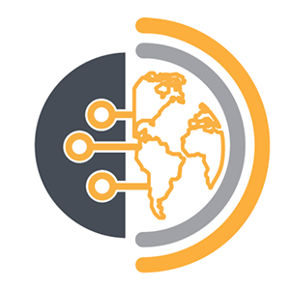Learning how to prevent a data breach is one of the most important things an organization can do. From commercial businesses to government entities, our team has worked on cyber security across a range of organizations. We've seen what happens when data isn't properly secured, and we know how to prevent that from happening. In this article, we'll explore the topic of data breaches more closely and provide you with some tips to stop them from happening to your organization.
What is a Data Breach?
A data breach is when sensitive, confidential, or otherwise protected information is compromised. This can come in the form of unauthorized access, use, disclosure, disruption, modification, or destruction of the data. Cybercriminals often exploit vulnerabilities in IT systems or use manipulation tactics to trick authorized users into providing access to sensitive data.
How does a Data Breach Happen?
Those who want access to your data will use any method at their disposal to get it. And without breach prevention steps, there are plenty of methods at their disposal.
Below are just a few of the ways bad actors get access to other people's data:
- Hacking: Computer systems often contain vulnerabilities that those with malicious intent can exploit. Hacking is when someone breaks into such a system.
- Insider Threats: Sometimes, the threat comes from within. Disgruntled employees or past employees who have not had their access revoked may use their valid credentials for nefarious ends.
- Phishing: Not everyone pays close attention when entering their login information. Phishing involves creating a near-perfect copy of a legitimate site and convincing people to enter their credentials into it.
- Social Engineering: This is similar to phishing, except the attacker relies on a more direct approach to trick or coerce someone with valid credentials into sharing them.
- Malware: Malicious software can be used to gain unauthorized access to a computer system or network, steal sensitive information, or disrupt operations.
- Physical Data Breaches: Computers haven't taken up entire rooms for a long time. Now, sensitive data can be stored on a device easily pocketed by a thief looking to steal that data.
- Cloud Breaches: It used to be that companies had their own servers, in their own physical locations, often with no connection to the internet at large. The cloud has changed that and brought additional security concerns with it.
- IoT Breaches: Computers aren’t the only devices with access to the internet. Each of these internet-connected devices poses a new potential target for exploitation.
How is Data at Risk?
Individuals or organizations with malicious intent can do a variety of things with data obtained from a data breach. They can use personal information to commit identity theft or financial fraud or sell the data to other criminals to do the same. If the information obtained is sensitive or embarrassing, the thief may use extortion tactics against its owner. The data can provide them with the tools they need to launch more sophisticated scams and attacks and do even more damage. Data breaching containing classified data can have implications at the national level.
.jpg?width=6500&height=3500&name=JLStock%20-%20shutterstock_1992061262%20(1).jpg)
Image Credit: JLStock / Shutterstock
How to Prevent a Data Breach
Preventing data breaches requires a multi-faceted approach that involves everyone on the staff. Below are some basic steps you can take to help keep your data secure.
- Implement Strong Passwords: Use strong, unique passwords for all accounts and change them regularly.
- Use Two-Factor Authentication: On top of those passwords, use two-factor authentication (2FA) for accessing sensitive information and applications to ensure that only authorized users can access it.
- Encrypt Data: Encrypt sensitive data, both in transit and at rest, to protect it from unauthorized access.
- Regularly Update Software: Keep software and operating systems up-to-date to protect against known vulnerabilities.
- Use a Firewall: Use a firewall to protect against unauthorized access to a network.
- Use Access Control: Strong passwords and 2FA are a big help. But limiting the number of people with access to the data is also important. Access to sensitive information should be granted only to those who need it.
- Make regular backups: Regularly back up sensitive information to protect against data loss in case of a breach.
- Train Employees: Data breach prevention is everyone's job. Provide regular training to employees and contractors on security best practices and how to identify and report suspicious activity.
- Develop a Response Plan: An incident response plan should be crafted, and all employees made aware of it, including who to contact and what steps to take in case of a data breach.
- Regularly Monitor and Audit: Regularly monitor and audit network activity for suspicious activity and review logs for any breaches.
- Keep an Eye on Third-Party Vendors: Be vigilant of third-party vendors and their security practices, as they can also pose a risk to your data.
Ensure Data Safety with Quzara's Cybersecurity Services: The Key to Preventing Breaches
There's more to learning how to prevent data breaches than merely checking a few boxes off of a to-do list. Developing response plans and properly auditing security practices requires expert knowledge or guidance. Quzara's cybersecurity services team is well-qualified to provide you with that expertise. We are FedRAMP accredited and well-versed in the latest tactics used by cybercriminals.
To get the most out of digital security and safeguard your business online, contact us today.
Featured Image: ozrimoz / Shutterstock


.jpg?width=300&name=ozrimoz%20-%20shutterstock_1704713953%20(1).jpg)
